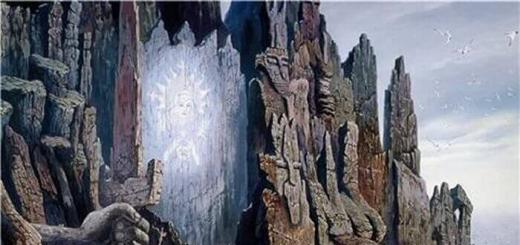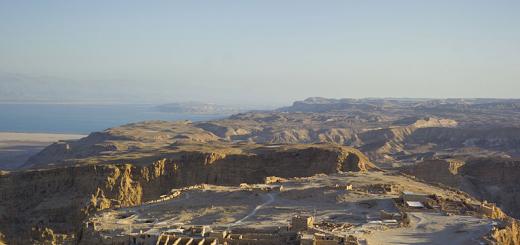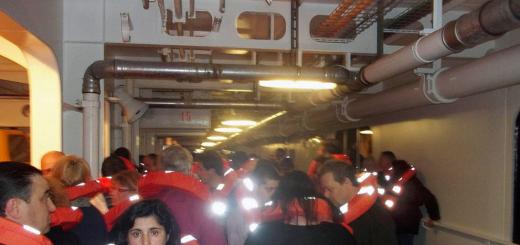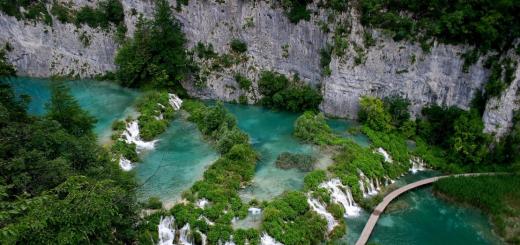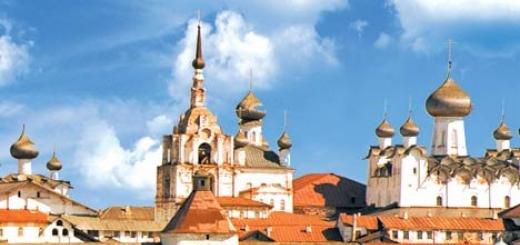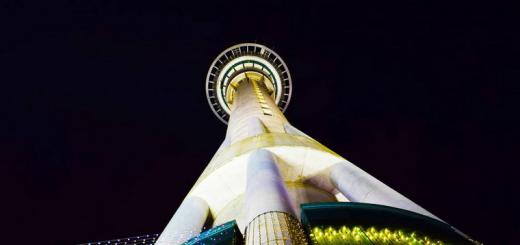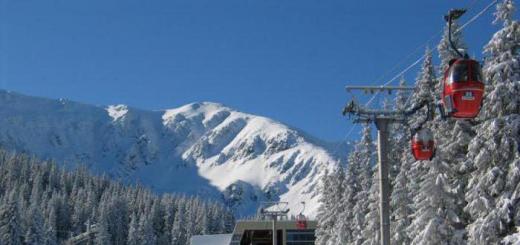The Perm governorship with the administrative center in the city of Perm was created in 1780 during the territorial transformations of Catherine II (by the Decree of November 20 / December 1) on the lands that once made up historical area, called in the old chronicles Biarmia, Peremia and Great Perm. Before the formation of the governorship, this area was part of the Solikamsk and Perm provinces, first of the Siberian, and then of the Kazan province (in addition to Perm the Great, the province also included the cities of Cherdyn and Sol Kamskaya), as well as the Orenburg and Tobolsk provinces. The new governorship included two regions - the Perm region proper, which covered the north, west and south of the governorship, and the neighboring Yekaterinburg, which included its eastern lands in the Trans-Urals, and the governorship itself was divided into sixteen districts (Alapaevsky, Dolmatovsky, Irbitsky, etc.). In 1783 the Chelyabinsk district was excluded from the Perm governorship (from the Yekaterinburg region) and transferred to the Orenburg governorship.
By Perm province fully or partially
there are the following maps and sources:
(except for the general
all-Russian atlases, where this province may also be)
 2-x imposition of land surveying of the 18th century. (1780-90s)
2-x imposition of land surveying of the 18th century. (1780-90s)
Land surveying map - not topographic (latitude and longitude are not indicated on it), hand-drawn map of the late 18th century. (after changing the borders of the provinces in 1775-79) on a scale of 1 inch 2 versts or in 1 cm 840 m... As a rule, a single county was drawn on several sheets, which are shown on a single reference sheet. At present, all the surveying maps at our disposal for the Perm province date back to the reign of Catherine II in 1775-96. The maps are colored, very detailed.
The purpose of the land survey map is to indicate the boundaries of land plots (so-called dachas) within the county.
 Lists populated areas Perm province 1875 (according to information 1869)
Lists populated areas Perm province 1875 (according to information 1869)
It is a universal reference containing:
- the status of the village (village, village, owner or state);
- the location of the settlement (in relation to the nearest tract, camp, at a well, pond, stream, river or river);
- distance from county town and the camp apartment (the center of the camp) in versts;
- the presence of a church, chapel, mill, etc.
The book contains 381 pages plus general information.
 Lists of settlements in Perm province 1905
Lists of settlements in Perm province 1905
- there is no connection to rivers and roads;
- population in different sections;
- nationality and class of residents;
The information in the book is current as of January 01, 1904
The book contains 526 pages, there is an alphabetical index
 Lists of settlements in Perm province in 1909
Lists of settlements in Perm province in 1909
This is a one-stop reference guide containing the following information:
- type of settlement, parish affiliation;
- the number of households in the settlement and its population (men and women separately);
- distance from in versts from several points;
Lists have been released country-by-country.
As a result of the reverse reorganization of the Russian governorships in the province under Paul the First, in 1796, the Perm governorship was renamed into the province of the same name, which, after the consolidation of some counties at the expense of the abolition of others (Alapaevsky, Dolmatovsky and Obvinsky), made up twelve counties - seven in the western , the European part (the counties of Perm, Krasnoufimsky, Kungursky, Osinsky, Okhansky, Solikamsky and Cherdinsky) and five in the Asian, Trans-Urals (the counties of Verkhotursky, Yekaterinburg, Irbitsky, Kamyshlovsky and Shadrinsky). At the time of Catherine II and Alexander the First, the Perm province (governorship) was administratively subordinate to the Perm and Tobolsk governor-general.
After the restoration of the diocese of the same name in Perm in 1799, the bishops of Perm and Yekaterinburg (until 1835), Perm and Verkhotursk (after the opening of the Perm vicariate in Yekaterinburg) were in charge of church affairs, and, finally, after 1855, the bishops of Perm and Solikamsk. During the time of Alexander the First, the borders of the Perm province retained the same outlines of the times of Catherine the Second and Paul the First, including a number of places in the north (Cherdyn and Verkhotursky districts) and in the south (in particular, the southern border of Krasnoufimsky district), which initially had straightened borders. In the subsequent time, the straightened border was preserved only in the northeast of the Verkhoturye district. The very same internal borders of the counties of the Perm province in the subsequent pre-revolutionary period of its history also repeatedly underwent some changes.
The time has come to write about the white and dark spots of the Perm province. Prior to that, there was my investigation into the disappearance as well. How, you ask, is not Perm province and Great Perm the same thing? As it turned out, no.
First, let's look at the map "Part of Siberia from Salt Kamskaya to Tobolsk" from the atlas of 1745. Yes, yes, Once the Perm Territory was included in the concept of "Siberia". Moreover, even the modern Kirov region belonged to Siberia. And the border between Europe and Asia ran along the line from Azov to the White Sea.
We are looking at the part on which the modern Perm Territory is drawn. True, then no one even thought about any Perm province. Moreover, after the city of Perm the Great disappeared at the beginning of the 18th century, the toponym “Perm” began to be gradually forgotten and disappeared into oblivion. Thanks to Catherine II. It was she who in 1781 ordered to establish the Perm province and build new town Perm, in which I am now writing these lines. And in 1745 there was nothing of the kind.
As you can see, the modern Perm region was then divided into several parts. At the very top is the Cherdyn district. This, in fact, is part of the Great Perm land. The so-called Kama Perm. There was also Vychegodskaya Perm. She, if you look on the map, is higher and to the left. There, in the area called Vilegodskaya Permtsa, I was born. Solikamsk uyezd lies just below Cherdyn. He never entered the Great Perm, but is mentioned in all historical documents. But the fun begins below.
From blog
Fiefdoms of the Barons Stroganovs. The appanage principality existed almost until the very establishment of the Perm province. I have about him. Anyone who has any interest in history Perm Territory, knows the text of the letter of Tsar Ivan the Terrible from 1564: “ And Yaz Tsar and Grand Duke Ivan Vasilyevich of All Russia Grigoria Anikeev's son Stroganov granted him, ordered him to sit in that empty place, 88 miles below the Great Perm, along the Kama River, on the right side of the Kama River with the mouth of the Lysva River, and on the left side of the Kama opposite Pyznoskaya kurya, down on both sides along the Kama River to the Chyusovaya River, on the black woods, put a small town (of course Oryol) and next to that town along the rivers and along the lakes and to the tops of the forest, and arable land around that town of Raspahivati, and put yards , and people to him in that town, unwritten and non-taxable, name". Actually, it describes the lands that we see on the map.
And now the question is - what was the name of these lands before the Stroganovs came to them? No, not Great Perm. She, as I already wrote, was higher and occupied the north of the modern Perm Territory. Let's look at the maps.
Abandoned boiler room
On the territory of the Kizelovskaya motorcade there is an old destroyed boiler house.
Abandoned workshops of the Lyaminsky plant
In the center of the village of Lyamino there is an enormous industrial zone, part of it is still in working order, and part of it is already crumbling into dust. There are also more or less tolerable objects.

Old Kizelovsky elevator
Located on the way to Kospashsky.
The territory of the object is guarded, but the watchman always goes to a meeting and lets those who are eager to see / take pictures / climb.

Steam locomotive cemetery
Sump for steam locomotives near Ust-Kherti.
A tricky entrance right along the railway tracks and voila - you are there.

Abandoned church in the village of Troitsk
Atmospheric church. Stands on a mountain in the center of the village.
Kungurskiy district.

Suksun Palace of Culture
Almost the center of Suksun, a symbiosis of a dilapidated temple and a palace of culture, built on the site of the churchyard at the temple.

Kungur stoker
The object is located on the outskirts of the city near the active market.
Abandoned for a long time. The top offers a stunning view of the city. Height in the region of 50-60m.

settlement Thaly
Former logging camp settlement near the town of Kizel, former station Lunevskaya narrow-gauge railway. Settlements that have fallen into decay due to the elimination of traditional transport (road) communication

Mine them. Chkalova
Mine them. Chkalova is located near the village of Usva. Coal was mined at the mine. The mine complex consists of many different buildings. Date of construction of the object 1957.

Ugleuralsky town
Liquidation: 1960. Urban-type settlement and railway station. on the river Kosaya, the right tributary of the river. Kosva, which flows into the river. Kama, the center of the Severo-Ugleuralsky urban settlement.
In 1904, the first coal mine (mine) was opened here - "Semenovskaya" (in Soviet times - the mine named after Stalin, from November 24, 1961 - "Central"), in 1905 a second mine (mine) appeared - "Mariinsky" (in Soviet times - the Uritsky mine). Mine No. 4 existed since 1935, and the Serov mine since 1939. During the Great Patriotic War in the village there was an evacuation hospital No. 2565 and a fishing artel "Shakhtar", reorganized on 26 Sept. 1956 to a furniture factory. In 1957, Ugleuralsky was connected with the regional center, the city of Perm, by a straight line railway line(through the stations Divya and Kukhtym). 29 nov. 1965 the state farm "Klyuchi", formerly known as the subsidiary farm of the Tsentralnaya mine, was organized in the village.

settlement Shumikhinsky
With the closure of the mines (1997), the population of the village, calculated for 50,000 inhabitants, decreased significantly. Today it is home to about 2 thousand people, of which 1 thousand are pensioners. Attempts were repeatedly made to completely resettle the endangered village.
In mid-July 2007, geological work began in Shumikhinskoye to search for underground sources of water supply. If scientists find sufficient water reserves, then a water intake in the village will be built using groundwater. While the water is in locality served according to the schedule from 10:00 Saturday to 20:00 Sunday.

Kizel city
A small town in the Perm region, with dozens or even hundreds of completely destroyed houses.

Kizel Bus Plant
Bus plant within the city, Kizel. Many destroyed workshops, an abandoned car park.
06/08/2009: the plant itself is operational.

Rubezhskaya church
Rubezhskaya church
Built on the site of a burnt-out wooden church, at the expense of clerks Dyachkov and Korovin. Relatively uncomplicated architectural decor - cornices with arcature belts and a curb, window frames are designed in the late Russian Baroque forms. In the first half of the 19th century, two porticos were added to the main part of the temple on the north and south sides.
At the beginning of the XX century. enclosed by a fence forged on stone pillars, which was dismantled in 1962.
On the walls and vaults, there are remains of paintings from the late 18th century. The condition is unsatisfactory. Part of the dome of the main temple was destroyed.
Architectural monument Russian Federation.

Polygon VKIU
Former military training ground on the outskirts of the city of Perm (opposite the circus across the Kama River).

Viaduct
Old viaduct. Located next to the existing railway.
Handsomely. It is difficult to drive a sedan in the wet season, but it is possible.
Perm Territory. Oktyabrsky district.

Old church
Nice church. Stands in the middle of the village of Dubrovo. It is not possible to pass without noticing this miracle. Inside the church, you can wander, if you wish, climb the belfry or the roof. From time to time, pigeons fly under the ceiling and bricks fall down. Don't be alarmed.

St. Nicholas Church
Built at the expense of the salt industrialist G.F.Shustov.
Stone. Until 1764 - the cathedral church of the Pyskorsky Nikolaevsky monastery, then - the parish church and, since 1840 - the cemetery. Now it is not used, the condition is serious.

Transfiguration Church
The Transfiguration Church was built in 1782-1808. at the expense of parishioners. It had three thrones: the summer one - the Transfiguration of the Lord, the Entry into the Church of the Most Holy Theotokos (until 1820 dedicated to St. Nicholas the Wonderworker) - in the winter side-altar on the right, and the Annunciation - in the winter side-altar on the left. The church is one-story, refectory, with a two-height main volume, one-domed. Completed with an octagonal dome. It is located in the center of the village (lower part) on the right bank of the Kamgorka River, on the bank of the Kama. The building itself has been rebuilt several times. The author of the reconstruction of the church in 1830 was the outstanding Russian architect I. I. Sviyazev. The project included the addition of a five-tiered bell tower over the narthex and three Doric porticos on the sides of the narthex, as well as the processing of the facades in the classicist style.
After perestroika, the village received a slender vertical - a bell tower with a high spire. In front of the church building, a spacious square with trade was arranged.
The church was closed in the 30s. The bell tower was dismantled in the 30-40s. The brick was used for the construction of the school. The carved iconostases have not survived. Used as a village club and bakery. It has been empty since 1978.


